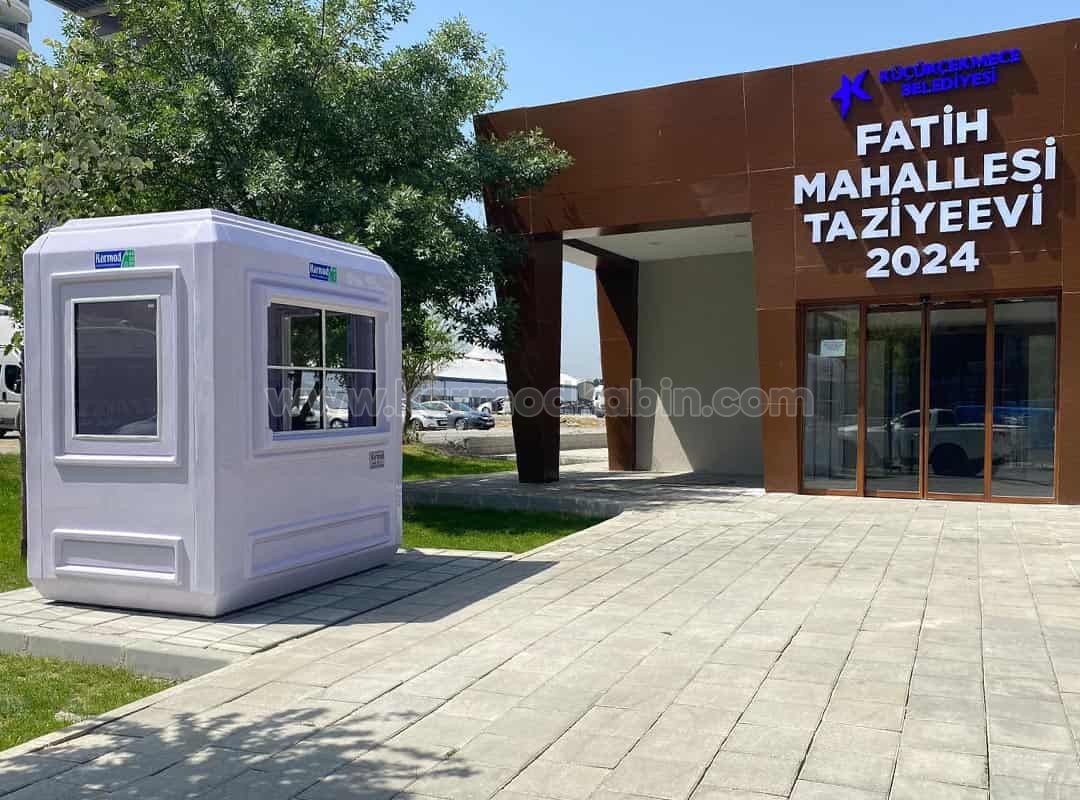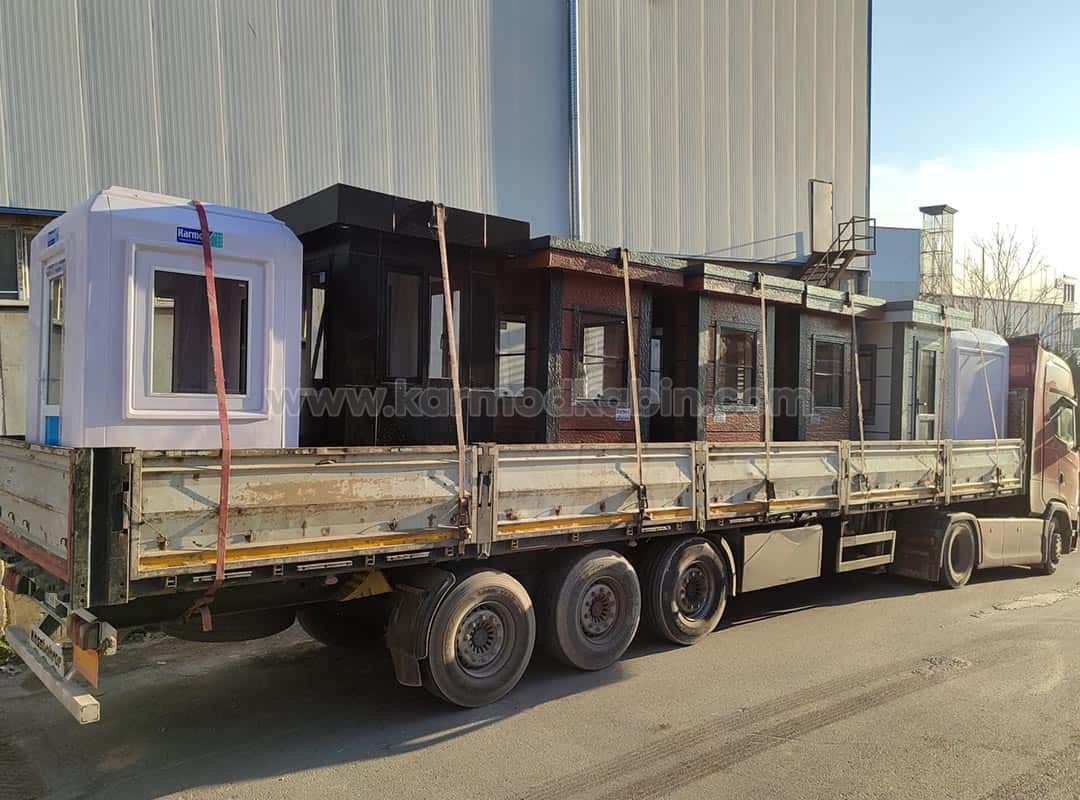
As modular and portable construction continues to grow, portable cabins have become indispensable in modern public projects. From temporary site offices and healthcare units to classrooms and municipal facilities, these flexible structures play a vital role in delivering quick, cost-effective, and sustainable solutions. However, when such buildings are used for public purposes, they must adhere to a complex web of regulations, standards, and safety requirements. Understanding these rules is crucial not only for contractors and suppliers but also for government authorities responsible for ensuring compliance and public safety.
Each region or country enforces its own framework of building codes, environmental regulations, and accessibility laws that directly affect how portable cabins are designed, manufactured, and installed. Public tenders often include strict conditions regarding fire resistance, insulation, sanitation, and structural stability. As a result, compliance is not optional - it is a mandatory foundation for project approval. Navigating these requirements effectively ensures smoother inspection processes, faster permit acquisition, and a stronger reputation for reliability and professionalism in the public sector.
In today’s fast-paced world, governments and municipalities are constantly seeking flexible, efficient, and affordable infrastructure solutions. Portable cabins have emerged as a cornerstone of this transformation, providing quick-to-install, modular spaces that meet a variety of public needs. Whether serving as temporary site offices for construction teams, mobile clinics for healthcare programs, or administrative units for municipal projects, portable cabins bring agility to public development. Their prefabricated nature allows authorities to respond swiftly to emergencies, population growth, or short-term functional requirements - all without the delays associated with traditional construction.
Beyond their practicality, portable cabins also support long-term strategic planning in public infrastructure. They are cost-effective, easily transportable, and environmentally friendly when manufactured with sustainable materials. For governments managing large-scale infrastructure initiatives, modular solutions like these make it possible to maximize efficiency while minimizing environmental impact. By integrating portable cabins into their infrastructure strategy, public institutions can ensure faster project delivery, higher safety standards, and greater flexibility - all essential components of modern urban management.
Before a portable cabin can be installed in any public project, it must comply with specific government regulations and legal frameworks that define how modular structures should be designed, produced, and used. These frameworks exist to ensure that all temporary or semi-permanent facilities meet the same standards of safety, functionality, and sustainability as conventional buildings. Depending on the country or jurisdiction, authorities may enforce national building codes, occupational health regulations, and environmental protection laws that govern everything from fire resistance to waste management. Understanding these legal foundations is essential for both manufacturers and project managers to avoid costly delays, penalties, or rejected approvals.
Public authorities typically require compliance in several key regulatory areas, including:
By aligning with these standards, portable cabin providers demonstrate not only technical competence but also social responsibility. For governments and contractors alike, compliance becomes the foundation of trust - ensuring that every public project is delivered legally, safely, and ethically.
Structural safety is the foundation of every public project - temporary or permanent. Portable cabins used for government or municipal purposes must fully comply with national and international building codes that guarantee the integrity of the structure under all possible conditions. Engineers are required to evaluate load-bearing capacity, wind and seismic resistance, and material strength before the cabin is approved for public use. Even though these cabins are often designed for short-term deployment, they must perform as reliably as conventional buildings. By adhering to strict construction standards, project managers ensure that the installation can safely accommodate workers, visitors, or equipment throughout its lifecycle.
Most countries define specific technical parameters that every compliant portable cabin must meet, including:
Compliance with these codes not only protects human life but also minimizes public liability and maintenance costs. For contractors, meeting these structural safety requirements is both a legal obligation and a mark of professionalism that strengthens their reputation in public tenders.
When portable cabins are used in public projects - whether as classrooms, site offices, or healthcare units - fire safety becomes a non-negotiable requirement. Governments impose strict fire regulations to protect occupants and property, ensuring that every modular structure is equipped to prevent, contain, and respond to fire incidents effectively.
These rules typically align with national fire codes and international standards such as ISO or EN classifications. The materials used in cabin construction must be certified for flame resistance, while electrical and ventilation systems must be installed to minimize ignition risks. Meeting these standards isn’t just about compliance - it’s about guaranteeing safety and trust in every public installation.
Fire safety and emergency compliance typically include the following measures:
Implementing these safety protocols ensures that portable cabins provide the same level of protection as conventional buildings. For public authorities, contractors, and citizens alike, adherence to fire safety standards represents a shared commitment to human life, responsible design, and operational excellence.
Public projects are designed to serve everyone - which means accessibility and inclusivity are not just ethical choices, but legal requirements. Portable cabins used in government facilities, schools, or healthcare centers must comply with universal design principles and accessibility laws such as the Americans with Disabilities Act (ADA) or equivalent local standards. These regulations ensure that all individuals, regardless of age or physical ability, can safely and comfortably access public spaces. From ramp gradients to doorway widths and signage placement, every aspect of the cabin’s design must facilitate independence and dignity for all users.

Beyond legal compliance, accessibility in portable cabins reflects a modern understanding of social responsibility. Universal design transforms temporary structures into truly public environments - ones that welcome diversity, foster equality, and empower communities. Incorporating wide entrances, slip-resistant flooring, and accessible sanitary units is not just about following regulations; it’s about creating environments that mirror the values of fairness and inclusion. For governments and contractors alike, adhering to accessibility standards enhances public trust and demonstrates a genuine commitment to human-centered design in every project.
Modern public projects are no longer judged solely on cost or speed - sustainability has become a core evaluation factor. Government tenders increasingly demand that portable cabins and modular buildings comply with environmental performance standards aimed at reducing carbon emissions, conserving resources, and minimizing construction waste. Manufacturers are expected to use recyclable materials, energy-efficient insulation, and production methods with a low ecological footprint. Compliance with certifications such as LEED, BREEAM, or ISO 14001 has become a significant advantage in public bidding, signaling a company’s commitment to eco-friendly innovation.
Environmental criteria in public tenders typically include:
By meeting these standards, portable cabin providers not only improve their eligibility for government contracts but also contribute to a greener, more sustainable future. In the public sector, sustainability is not merely a requirement - it’s a statement of responsibility and progress, shaping how communities grow and thrive.
When portable cabins are used in public projects such as schools, medical centers, or temporary housing, strict health and sanitation standards must be followed. These regulations ensure that every unit provides a clean, safe, and healthy environment for its occupants. National health authorities often define detailed hygiene protocols that apply to portable facilities, covering everything from ventilation systems and waste disposal to water supply quality. Compliance is particularly critical for cabins used as restrooms, clinics, or food service areas, where even small oversights can lead to contamination or health risks.
Common health and sanitation requirements include:
Meeting these guidelines not only fulfills legal obligations but also enhances user comfort and confidence in public facilities. For government agencies and contractors, maintaining health compliance is a sign of professionalism and respect toward the communities they serve - ensuring portable units remain both functional and safe.
Portable cabins in public projects must adhere to rigorous electrical, plumbing, and HVAC (heating, ventilation, and air conditioning) standards to ensure safety, comfort, and efficiency. These systems are not secondary features - they are integral components that determine whether a modular building can be approved for public use. Every connection, from wiring and fuse boxes to water lines and air ducts, must comply with national engineering codes and safety certifications. Proper installation prevents hazards such as electrical fires, water leakage, or poor air quality - all of which could compromise public safety and result in severe penalties for noncompliance.
Typical installation and system compliance requirements include:
Following these installation rules ensures that portable cabins offer the same level of safety and functionality as permanent structures. For public authorities, ensuring compliance means protecting both workers and the public - while also promoting trust, professionalism, and sustainability in every project.
Before a portable cabin can be safely installed on a public project site, proper site preparation and foundation work must be completed according to engineering and regulatory standards. Even though these structures are often temporary, the terrain must be inspected for load-bearing capacity, drainage, and ground stability. Regulations typically require a site assessment report that ensures the land is free from subsidence, flooding risks, or contamination. In some cases, soil compaction tests and drainage plans are mandatory to confirm that the foundation can support the cabin’s structural weight and occupancy load. This process guarantees not only safety but also long-term performance, preventing structural shifting or damage.
Authorities also specify foundation regulations that vary depending on the type of installation - temporary, semi-permanent, or permanent. Anchoring systems, raised platforms, or concrete pads may be required to secure the structure and distribute loads evenly. Electrical and plumbing connections must be carefully planned during the foundation stage to comply with safety standards and accessibility requirements. In public projects, adherence to these rules reflects professionalism and accountability, ensuring that even a modular or mobile unit meets the same engineering integrity and environmental responsibility as a traditional building.
No portable cabin can be placed into operation within a public project without first undergoing a series of inspections, certifications, and formal approvals. These procedures ensure that every modular structure complies with all technical, environmental, and safety standards set by the relevant authorities. Typically, inspection agencies or government departments evaluate the design plans, construction materials, and installation methods before granting authorization for use. Each stage of the process is carefully documented to maintain transparency and accountability - two essential values in public sector development.

The inspection and approval process generally involves:
Completing these procedures not only fulfills legal obligations but also builds trust among public stakeholders. When a portable cabin is properly certified, it represents reliability, transparency, and accountability - hallmarks of high-quality public construction.
Not all portable cabins in public projects serve the same purpose or follow identical regulations. The main distinction lies between temporary and semi-permanent installations, each with its own set of technical and legal requirements. Temporary cabins are designed for short-term use - such as construction site offices, testing centers, or event facilities - and are typically governed by simplified permit processes. These structures must still meet safety and hygiene standards but are usually exempt from certain zoning or long-term energy performance obligations. Their design prioritizes quick assembly, mobility, and minimal environmental impact, allowing for efficient relocation or removal once the project concludes.
Semi-permanent installations, however, are subject to stricter regulations because they remain on-site for extended periods - often several years. Examples include modular classrooms, public offices, or healthcare facilities built from portable units. These structures require reinforced foundations, enhanced insulation, and more robust electrical and plumbing systems. They may also fall under broader building codes, including accessibility and fire resistance laws similar to those for traditional buildings. Understanding the differences between these two categories helps public authorities and contractors select the appropriate solution for their project goals - balancing flexibility, cost, and compliance across every stage of development.
In public sector construction, transparency and accountability are fundamental. Every supplier or contractor involved in delivering portable cabins for government projects must follow detailed procurement and tendering regulations. These rules are designed to prevent unfair competition, ensure value for public money, and guarantee that all selected products meet the required technical and safety standards. Typically, tender documents specify everything from design requirements and environmental performance to delivery timelines and certification obligations. Understanding this process allows modular construction companies to prepare complete and compliant bids, increasing their chances of success in public tenders.
Procurement and tendering frameworks generally emphasize the following points:

By adhering to these rules, suppliers build credibility and trust within the public sector. Governments, in turn, gain access to high-quality, regulation-compliant portable cabins that meet modern expectations of efficiency, safety, and sustainability.
Before any portable cabin can be deployed in a public project, compliance documentation and official permits are required to ensure that every stage of the installation meets government standards. These approvals protect the public by confirming that the structure is safe, environmentally responsible, and built in accordance with local regulations. Depending on the type of project, authorities may request documentation from design certification to structural testing and environmental assessments. Failure to obtain these documents can result in project delays, financial penalties, or even legal suspension of operations - making early preparation essential for both contractors and suppliers.
Typical documentation and permit requirements include:
Preparing and submitting these documents in advance not only speeds up project approval but also demonstrates professionalism and transparency. For companies working on public contracts, proper documentation is more than a regulatory step - it’s a strategic advantage that establishes credibility and trust with government partners.
Even experienced contractors can face serious consequences if they overlook regulatory obligations when delivering portable cabins for public projects. Government regulations are designed to protect public safety, environmental health, and fiscal responsibility - and violations can lead to heavy penalties, project delays, or even permanent disqualification from future tenders. Most compliance failures occur not because of intentional neglect, but due to insufficient documentation, lack of awareness about updated codes, or improper installation practices. To safeguard both reputation and profitability, every company involved must prioritize a proactive compliance strategy at every stage of design, production, and deployment.
The most common mistakes and their associated penalties include:
Avoiding these pitfalls not only protects contractors from sanctions but also builds long-term trust with government clients. In the public construction sector, compliance is more than an obligation - it’s a reflection of professionalism, integrity, and commitment to excellence.
Navigating the complex landscape of public construction regulations requires more than technical expertise - it demands strategic partnership with experienced professionals who understand the nuances of government compliance. Working with a trusted modular construction provider ensures that every stage, from design and documentation to final inspection, meets the strict standards set by public authorities. Choosing the right partner not only minimizes risks but also accelerates approvals, reduces costs, and enhances the overall success of the project.
Our expert team specializes in delivering fully compliant portable cabin solutions tailored to public projects of all sizes. By partnering with us, you gain access to:
- Let’s build the future of public infrastructure together - with portable cabin solutions that meet every regulation and exceed every expectation.